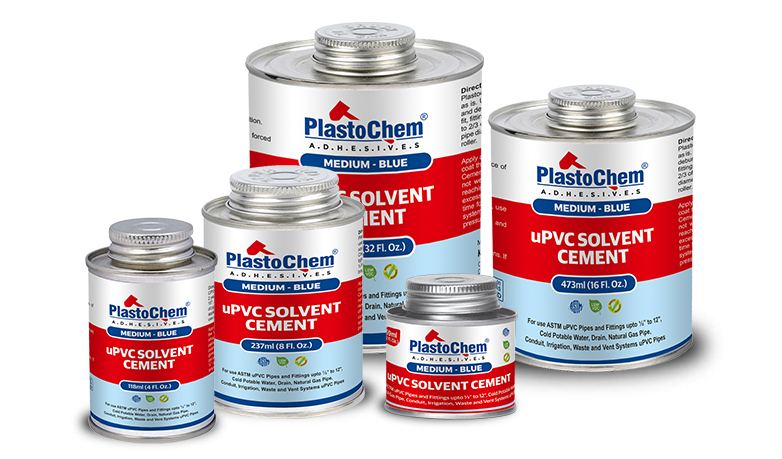Solvent cement for plumbing is commonly used for joining PVC (polyvinyl chloride), CPVC (chlorinated polyvinyl chloride), and ABS (acrylonitrile butadiene styrene) pipes.
It essentially melts the surface of the plastic pipes and fittings, allowing them to bond as they harden. You can make solvent cement using the following steps:
Materials Needed:
- PVC or CPVC scraps (depending on the pipe material you're working with)
- Acetone or Methyl Ethyl Ketone (MEK)
- Clean glass or metal container with a lid
- Stirring stick
Steps to Make Solvent Cement:
Collect PVC/CPVC Scraps:
- Obtain small pieces of PVC or CPVC pipe or fittings. The same material should be used for the solvent cement to ensure proper bonding.
Prepare the Solvent:
- Pour acetone or methyl ethyl ketone (MEK) into the container. Acetone is readily available in hardware stores, and it works well as a solvent for dissolving plastics like PVC.
Dissolve the Scraps:
- Cut the PVC or CPVC scraps into small pieces to increase their surface area. This will make them dissolve faster.
- Add these pieces to the acetone or MEK in the container. Use enough solvent to cover the plastic scraps. Stir occasionally to help dissolve the pieces.
Allow the Mixture to Dissolve:
- Seal the container with a lid and let the scraps sit in the solvent for several hours. Stir the mixture periodically. The plastic should dissolve into the solvent, creating a thick, glue-like substance.
Adjust the Consistency:
- If the solvent cement is too thick, add more acetone or MEK to thin it. If it's too thin, add more plastic scraps to thicken the solution.
Storage:
- Keep the solvent cement in a tightly sealed container when not in use. It can evaporate quickly, so sealing it will maintain its effectiveness.
Application:
- Before applying, clean the pipe and fitting with primer or solvent to remove dirt and oil.
- Brush a layer of your homemade solvent cement onto both surfaces (pipe and fitting), then quickly join them together.
- Hold in place for a few seconds while the cement sets, and allow the bond to cure as per the solvent cement’s drying time (usually 24 hours for full strength).
pvc solvent cement
This homemade solvent cement is quite strong, but make sure to follow local plumbing codes and manufacturer recommendations when performing any plumbing work.




